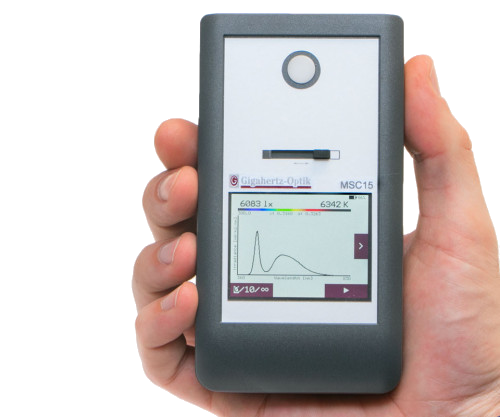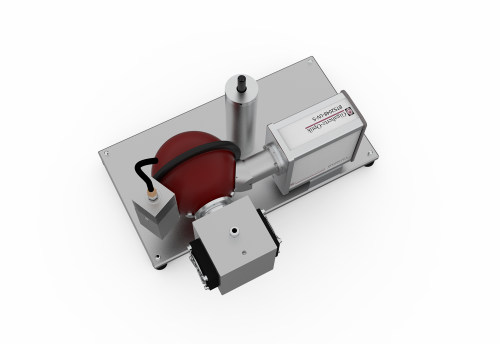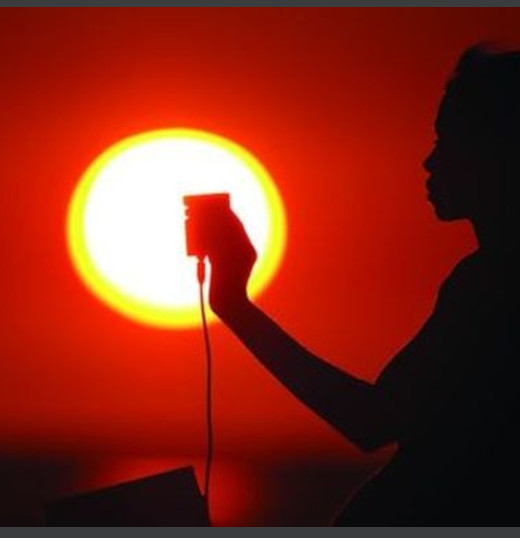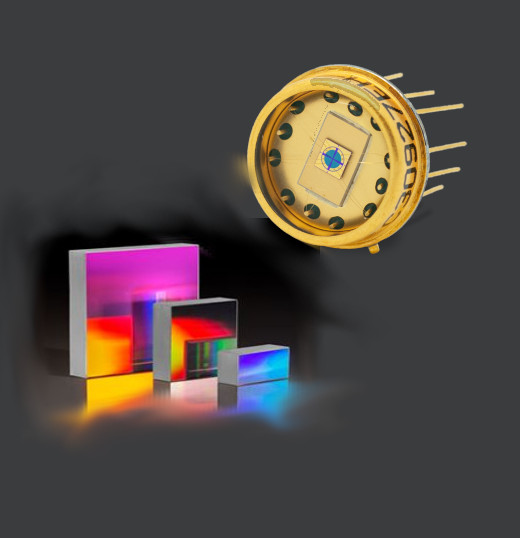SPEKTRORADIOMETRY




Badania radiometryczne - fotometryczne i kolorymetryczne
SPEKTRORADIOMETR
Radiometr mierzy całkowite promieniowanie elektromagnetyczne, podczas gdy spektro-radiometr analizuje rozkład energii w zależności od długości fal, umożliwiając bardziej szczegółowe badania spektralne.
Radiometr:
Radiometr jest urządzeniem służącym do pomiaru całkowitej ilości energii promieniowania elektromagnetycznego, która dociera do niego z danej powierzchni. Radiometry zwykle mierzą całkowite promieniowanie w szerokim zakresie długości fal, niezależnie od konkretnych długości fal lub widma. Radiometry mogą być stosowane w różnych dziedzinach, takich jak astronomia, meteorologia, nauki o środowisku, badania klimatyczne itp.
Uwaga! Nie wszystkie radiometry są wykazane poniżej, tworzymy spektroradiometry/radiometry pod indywidualne zamówienia.
Uwaga! Nie wszystkie radiometry są wykazane poniżej, tworzymy spektroradiometry/radiometry pod indywidualne zamówienia.
Spektroradiometr:
Spektroradiometr jest bardziej zaawansowanym narzędziem, które oprócz pomiaru całkowitej ilości energii promieniowania, jest również w stanie zbadać rozkład energii promieniowania w zależności od długości fal. Oznacza to, że spektro-radiometr może mierzyć intensywność promieniowania w różnych pasmach widma. Może dostarczyć informacji na temat konkretnych długości fal lub widmowych charakterystyk promieniowania. Spektro-radiometry są szeroko stosowane w badaniach naukowych, takich jak spektroskopia, analiza chemiczna, monitorowanie atmosferyczne itp.
Spektroradiometry są wykorzystywane m.im. do:
- do badania bezpieczeństwa bezpieczeństwa fotobiologicznego
- do pomiarów źródeł światła takich jak diody LED i lasery
- do pomiarów promieniowania słonecznego naturalnego i sztucznego
- do badań procesu utwardzania UV
Spektroradiometry - pomiary kolorymetryczne i fotometryczne
Szeroka gama spektroradiometrów do pomiaru:
- natężenia oświetlenia (lux)
- luminancji (cd/m²)
- strumienia świetlnego (lumenów)
- światłości (cd)
oraz wartości charakterystycznych kolorymetrycznych, takich jak współrzędne chromatyczności (x,y,u', v') lub wskaźnik oddawania barw (CRI) itp.
W przypadku pomiarów barwy spektroradiometryczny rozkład widmowy jest wykorzystywany do określenia wszystkich parametrów na podstawie wyprowadzeń matematycznych. Na przykład funkcje dopasowywania kolorów XYZ zdefiniowane przez standardowego obserwatora kolorymetrycznego CIE 1931. Lub funkcje dopasowywania kolorów zdefiniowane przez uzupełniającego standardowego obserwatora kolorymetrycznego CIE 1964.
Do precyzyjnych spektroradiometrycznych pomiarów kolorów potrzebna jest zwłaszcza dokładna kalibracja długości fali i bezwzględna kalibracja radiometryczna. Dalsze dopasowania matematyczne, takie jak korekcja środkowoprzepustowa zgodnie z CIE214, jeszcze bardziej zwiększają dokładność. Oczywiście miernik podstawowy powinien być tak zaprojektowany, aby dopasować go do potrzeb m.in. zakres widmowy i szerokość pasma optycznego.
Dalsze parametry istotne dla zastosowania spektroradiometrów barwnych/spektralnych mierników barw to m.in. korzystanie z urządzeń mobilnych, korekta temperatury lub połączenie Wi-Fi. Do użytku stacjonarnego potrzebne są różne interfejsy, takie jak USB lub Ethernet, oraz optyka wejściowa, taka jak systemy spektroradiometryczne ze sferą lub goniometr.
Masz pytania?
Napisz do nas
Spektroradiometry
- Illuminance (lux) and chromaticity metrics
- Luminous flux (lumens) and chromaticity metrics
- Luminous intensity (cd) and CIE 127 averaged intensity.
- Luminance (cd/m²) and spectral power distribution
Spectroradiometers for measuring illuminance (lux) and chromaticity metrics
| Model | Wavelength range / nm | Optical Bandwidth | Entrance Optic | Measurement range | Remark |
| MSC15 | 360 - 830 | 10nm optical bandwidth correction applied according to CIE 214 | Diffuser window with 10mm diameter, cosine corrected field of view, f2 ≤ 3 % | Inexpensive spectral light meter for common measurement tasks in general lighting. | |
| BTS256-EF | 360 - 830 | 10 nm, mathematical optical bandwidth correction according to CIE 214 can be automatically applied | Diffuser window with 20mm diameter, cosine corrected field of view, f2 Error ≤ 3% | 199,999 lx ≤ 5ms (white light) | Precise, low-scatter spectroradiometer with Bi-Tec sensor for PWM light and flicker measurements. |
| 100 lx ≤ 1s (white light) | |||||
| CSS-45 with CSS-D | 360 - 830 | 10 nm optical bandwidth correction applied according to CIE 214 | CSS-45 with Display unit CSS-D | ||
| BTS256-LED-DA | 360 - 830 | Bayonet adapter with diffuser window. 20 mm diameter of the diffuser window. ± 30° cosine corrected field of view. 5 % cosine correction within the specified range. | Universal spectroradiometer with diffuser accessories from the BTS256-LED Plus Concept. | ||
| BTS2048-VL | 280 -1050 | 2 nm | Diffusor, cosine corrected field of view (f2 ≤ 3 %) | 10lx 2,5s *10 | Versatile High End Spectroradiometer |
| 100lx 250ms *10 | |||||
| 1000lx 25ms *10 | |||||
| BTS2048-VL-TEC | 280 -1050 | 2 nm | Diffusor, cosine corrected field of view (f2 ≤ 3 %) | 10 lx 2,5 s *10 | BTS2048-VL including temperature control |
| 100 lx 250 ms *10 | |||||
| 1000 lx 25 ms *10 | |||||
| BTS2048-UVVISNIR | 200 - 900 | 2 nm | Diffusor, cosine corrected field of view (f2 ≤ 3 %) | 10 lx 3 s *10 | Versatile High End spectroradiometer from UV to NIR |
| 100 lx 300 ms *10 | |||||
| 1000 lx 30 ms *10 | |||||
| BTS2048-VL-F | 280 -1050 | 2 nm | Light guide adapter F16-F | Fiber bundle input. Optional fiber and cosine diffusor accessories | |
| BTS2048-VL-TEC-F | 280 -1050 | 2 nm | Light guide adapter | CCD sensor with Peltier cooling for maximum integration times. Fiber input. |
Integrating sphere based spectroradiometer systems for measuring luminous flux (lumens) and chromaticity metrics
| Model | Integrating sphere | Source emission | Wavelength range / nm | Optical Bandwidth | Measurement range (*1) | Remark |
| BTS256-LED | 50 mmØ | 2-Pi (10 mmØ) | 360 - 830 | 5 nm | 10 mlm - 70000 lm | Handheld spectroradiometer with internal integrating sphere for luminous flux. |
| ISD-21-BTS256-LED | 210 mmØ | 2-Pi (63.5 mmØ) | 360 - 830 | 5 nm | 0.3 lm to 35000 lm | Universal spectroradiometer with 21 cm integrating sphere for luminous flux of 2Pi lamps |
| ISD-50-BTS256-LED | 500 mmØ | 2-Pi (127 mmØ) | 360 - 830 | 5 nm | 1.2 lm to 120,000 lm | Universal spectroradiometer with 50 cm integrating sphere for luminous flux of 2Pi lamps |
| ISD-50HF-BTS256-LED | 500 mmØ | 4-Pi or 2-Pi (127 mmØ) | 360 - 830 | 5 nm | 1.2 lm to 120,000 lm | Universal spectroradiometer with 50 cm opening integrating sphere for luminous flux of 4Pi and 2Pi lamps |
| ISD-100HF-BTS256-LED | 1000 mmØ | 4-Pi or 2-Pi (254 mmØ) | 360 - 830 | 5 nm | 4 lm to 400,000 lm | Universal spectroradiometer with 100 cm opening integrating sphere for luminous flux of 4Pi and 2Pi lamps |
| ISD-15-BTS2048-VL | 150 mmØ | 2-Pi (35 mmØ) | 350 -1050 | 2 nm | 2 lm to 16000 klm | Compact spectroradiometer for in-line LED binning. Integrating sphere with dust-proof measuring aperture. |
| ISD-25-BTS2048-VL | 250 mmØ | 2-Pi (76 mmØ) | 350 -1050 | 2 nm | 5.5 mlm - 43000 klm | Compact spectroradiometer system for luminous flux and light color with expandable measuring aperture plate on integrating sphere |
| ISD-100HF-BTS2048-VL | 1000 mmØ | 4-Pi or 2-Pi (254 mmØ) | 350 -1050 | 2 nm | 0.1 lm - 700000 klm | Multi-sided integrating sphere measuring system with 1m diameter for larger lamps in 2Pi and 4Pi measurement geometry |
| ISD-15 + CSS-45 | 150 mmØ | 2-Pi (35 mmØ) | 360 - 830 | 10 nm optical bandwidth correction applied according to CIE 214 | Example configuration of the CSS45 spectroradiometer sensor with integrating sphere | |
| BTS256-LED Plus Concept | 50 mmØ + external | 2-Pi / 4-Pi | 360 - 830 | 5 nm | External sphere dependent | Handheld spectroradiometer with integrated integrating sphere for luminous flux. C |
| TPI21-TH | 215 mmØ | 2-Pi | 350 -1050 | 2 nm | 0.5 mlm - 200,000 lm | Automated LED test system, CIE S 025 / LM-79-08 compliant |
| TFCT25 | 250 mmØ | 2-Pi | 350 -1050 | 2 nm | 0.05 mlm - 141 klm | Spectral transmission & luminous flux test system for lateral light-emitting light guides used in front and rear automotive lighting |
(*1) Using BiTec Spectral & V(λ) Sensors | ||||||
Spectroradiometers with entrance optics for the measurement of luminous intensity (cd) and CIE 127 averaged intensity. Compatible with or part of goniometer systems.
| Model | Measurement Geometry | Wavelength range / nm | Measurement range V(λ) sensor | Measurement range - Spectral sensor | Remark |
| BTS256-LED-IB | Average Intensity CIE condition B | 360 - 830 | 7.5 mcd - 100 Mcd | Averaged LED intensity CIE127 B adapter for versatile BTS256-LED | |
| BTS2048-VL-CP-ILED-B-IS-1.0-HL | Average Intensity CIE condition B | 350 - 1050 | 0.15 mcd - 420 kcd | 15 mcd - 150000 kcd | For LED binning / LED test systems CIE 127 condition B (Averaged LED intensity) |
| GB-GD-360-RB40-2-BTS256-LED | Goniometer 2-Pi distance 100 - 2000mm | 360 - 830 | 0.2cd - 250000 kcd (*1) | 40cd - 4000 kcd (*1) | Goniometer for versatile BTS256-LED spectroradiometer |
| GB-GD-360-RB40-2-BTS2048-VL | Goniometer 2-Pi distance 100 - 2000mm | 350 -1050 | 0.1 cd - 3E8 cd (*1) | 6 cd - 1000 kcd (*1) | Goniometer for high speed spectroradiometer of BTS2048 series |
(*1)At 1m distance |
Spectroradiometers with entrance optics for the measurement of luminance (cd/m²) and spectral power distribution
Skontaktuj się z nami by poznać możliwości.
Dostawcy
Nasi partnerzy w tej kategorii







